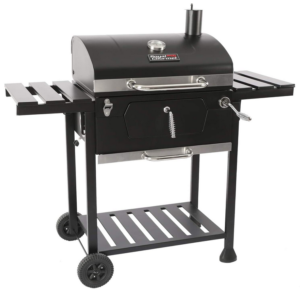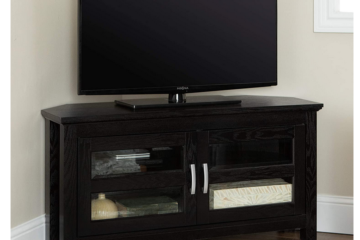
For most of us, the idea of a bbq entails a white hot, charcoal fueled beast, pumping out plumes of smoke to provide that delicious flavor we all know and adore. Whilst a lot more simple to choose than a gas bbq, there are still a number of options, some more interesting ones which you might have never actually considered in fact, which have to be weighed up to unite master with the correct grill.
Unlike gas where you have to also consider coordinating overall dimension with the number of burners, with charcoal the bigger the area, the more charcoal you throw in. For any portable barbecue which you plan to take to the beach or park, you needn’t worry about anything but price. However, if you’re planning on entertaining more visitors, then you’ll start needing larger grilling areas and quality. In addition, remember that the beauty of charcoal means you can always use your larger barbecue to do small cookouts; just add less charcoal and keep every thing firmly packed in the middle instead.
In the event that mobility is not an issue, don’t attempt to cut costs having a inexpensive build. The last thing you want is it blowing over, or the handles of the grill falling off and dropping your meat or even burning yourself. In the event that you go for posh versions you could have the look of the slinky gas barbecues but put charcoal in instead. Don’t bother – the best part about charcoal bbqs is simplicity. In the end, charcoal grilling is basically a process of chucking a sizable bag of coals into a steel container and hovering a grill above it.
Go for a solid, sturdy grill with great handles which rests securely in place on the barbecue. Many grills come in the form of chrome-plated steel, but even better ones will be solid stainless steel or even enamel-coated. Enamel coated areas are much more common on charcoal bbqs than with gas, which allow simple cleansing, heat preservation as well as weather protection, but are prone to chipping. Complete the bundle with welded or strong-bolted legs to keep it securely in position.
So what kind to go for? The primary method to manage the heat in charcoal cooking would be to increase or lower the height of the barbecue grill, so think about getting a range of levels, in addition to additional grills to maintain different heights at all times (allowing you to cook a lot more fragile foods simultaneously).
Temperature can also be controlled with covers and air vents, so if you fancy roasting as well as grilling go for an enclosed style like a kettle drum. A heat monitor can be bought separately should you not acquire one with your enclosed system. Little details additionally help on more industrial models for example 1 touch coal waste removal slots and hinged grills you can match it in the dish washer.
A starting point for periodic barbecuing needs is really a mid-size Brazier design. Probably the most familiar to all of us, Brazier simply means a charcoal tray with no vents or cover, where temperature is managed solely by the height of the barbecue grill. These are available as hemispherical cookware, drums or as long rectangle-shaped trays such as “trolley” models, complete with wheels and frequently table areas at the side to put numerous bits and pieces. They range in dimensions from medium to huge and are reasonably priced, but do not expect them to last forever or be made of the greatest stuff.
The lidded, vented and much more flexible abilities of the kettle design are a recommended purchase, and still do not carry a hefty cost tag. You should expect build quality to be better, so if bought in a shop test the cover – this should be heavy and well hinged. Look for coated or even stainless vents which will resist rust, and consider the barbecue grill, as often the handles are so little you will have trouble picking up the grill with oven gloves on. The good thing about kettle models is in the versatility; open the lid and grill as normal, but close it and you suddenly gain the ability to roast.
In addition, with the lid closed you are able to allow that beautiful smoky flavor to permeate more into the food, and flare ups from the drippings are no longer a problem within the enclosed environment. Posh versions have temperature probes, however to be honest you can stick a simple chef’s thermometer in there and save yourself some dosh. Charcoal dividers are a nice touch, letting you place the coals on 1 side and cook the meat in the far end in order to roast much more gently with the cover on.
In the event that you are used to flash burning (ahem, “cooking”) your own typical range of sausages and burgers then you might have never thought of slow cooking. The best part associated with charcoal cooking is that flavorsome smoke, so why give your meats such little time in to soak it up?
Slow cooking models are more gentle version of the kettle style, using controllable air vents to determine how warm the actual charcoal becomes. Crucially, the slow cooked, smoky tenderness is actually achieved with a water pan in the bottom – keeping meats, vegetables and fish moist. Big enough to cook a whole roast in, you’ll certainly be wowing your visitors with something a little different.
Click below to Buy from Amazon
